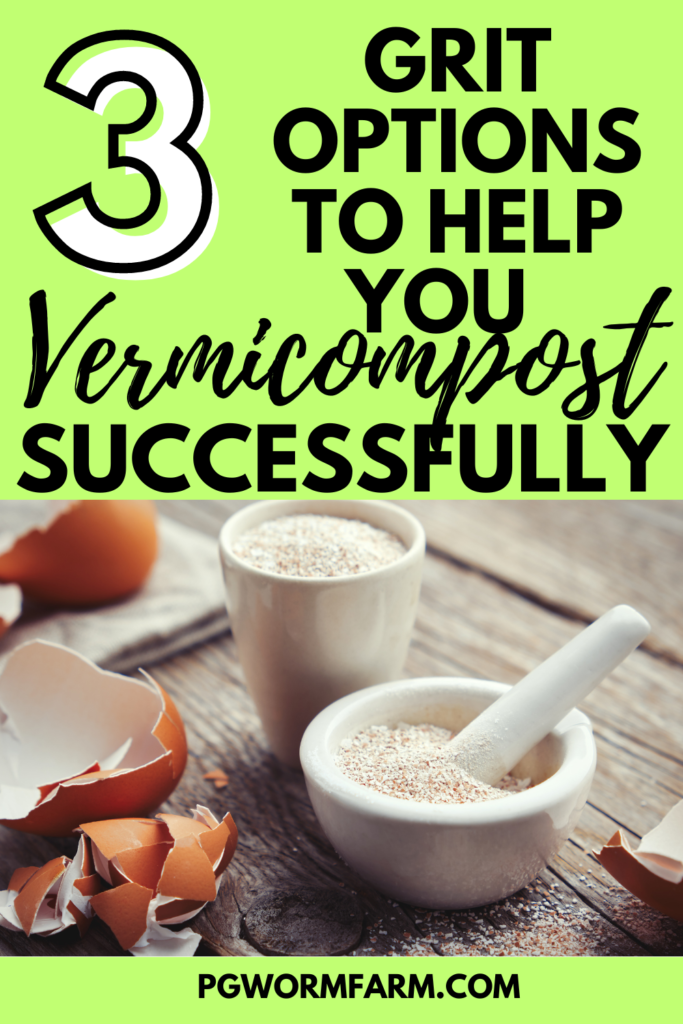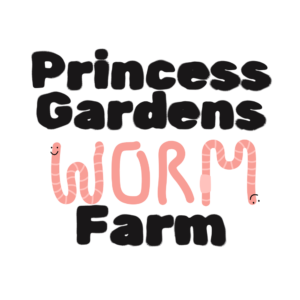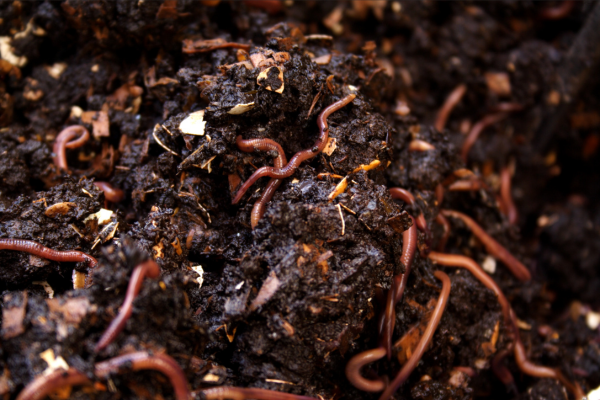
If you are reading this blog, you have likely made it to the point in your Vermicomposting journey where you want to learn more about the world of grit. Or perhaps, you are still in the research phase of your journey, and wish to travel down the rabbit hole of grit and its importance when feeding worms. Up until I had a student who was allergic to eggs; my thought process was, why not just use eggshell. Keep it simple, right!?! With that in mind, not everyone can nor wants to use eggshell. My students allergy caused me to dive deeper into the many forms of grit, the benefits they offer to a Vermicomposting system, and what are the best ways to apply these forms of grit.
What is grit and why is it so important?
- Worm Anatomy
- Eggshell Powder
- Sand as Grit
- Dolomite Lime
A peak into worm anatomy!
Before we explore grit in all its glory, let’s first explore the anatomy of a worms digestive system. This will give us a better understanding of why grit is so important to earthworms.

Mouth
Like with any animal, a worms mouth is the first step in their digestive process. Their toothless, straw-like mouth suck in microbes, dirt, bedding, and the kitchen scraps we feed them.
Pharynx
Situated directly behind that lies the pharynx. This is the muscle that helps draw materials into the a worms mouth through muscle contractions.
Esophagus
The esophagus plays a vital role in a worms digestive process and does a number of tasks to make things as efficient as possible.
- Transportation of food – the esophagus acts as a conduit, carrying materials that have been ingested from the worms mouth to its crop.
- Regulation of pH – as materials move through the esophagus, composting worms release a substance that helps to neutralize ingested material. This helps in their digestive process and helps keep castings/bedding pH and check.
- Temporary storage – though the main function of the esophagus is transportation, it can act as a storehouse before passing material onto the crop.
This step in the process makes things super efficient. It allows our worms to break down and absorb nutrients from the materials they ingest. This is how worms plays such a crucial role in soil health and the nutrient cycle within the ecosystem where they reside.
Crop + Gizzard
These areas of digestion act as teeth do for other animals. The muscles grind ingested material with the use of grit/minerals. We sprinkle with feedings throughout our Vermicomposting systems.
Crop Functions
- Moisten – the crop gets material nice and moist so that it grinds easily and flows better through the digestive tract.
- Storage – after material passes through the esophagus, the crop will act as a temporary storage unit and will also soften, said materials to prep it for the gizzard.
Gizzard Functions
- Grinding – the primary function of a worms gizzard is to grind and breakdown food. This is where our grit comes in, it grants worms the ability to grind materials into smaller more digestible pieces.
- Digestion – when grinding the food, the gizzard is making it easier for enzymes and digestive fluids to do what they do in the intestines.
T he crop and gizzard work as a team to facilitate efficient digestion and absorption of nutrients.
The Intestine
The intestines play a vital role in an earthworms digestive system. Breaking down food, extracting and absorbing, and overall keeping our worms healthy and strong.
- Digestion – after the gizzard grinds up, ingested material, it flows into the intestines where enzymes break organic materials into simpler molecules.
- Absorption – the intestines are where nutrients is absorbed. These nutrients are then distributed throughout the worms body to support its functions and activities.
- Microbial symbiosis – worms intestines host a wide variety of microorganisms. who’s job is to aid in digesting complex organic matter. Microbes help to break down things that worms cannot break down on their own.
- Excretion – the last function of the intestines is to form and release castings. This is where undigested/unused residue is expelled from the worms body.
Now that we know how worms process food and materials we can more clearly see why it is so important to use grit when feeding. So… are you ready to explore my favorite forms of grit? Let’s get into it!
Have Questions About Vermicomposting?
Schedule your free 30 Minute Consultation.
Grit Guide: Eggshell Powder
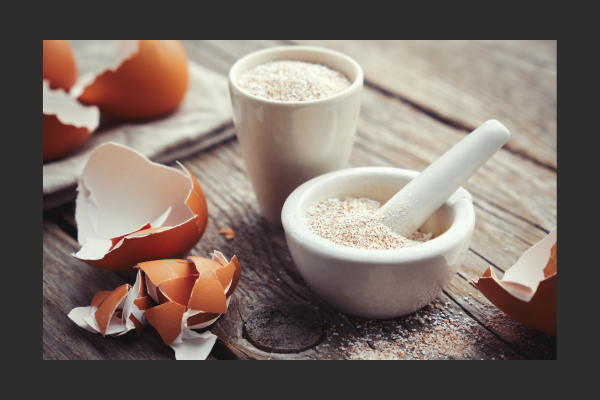
First up; and most commonly used, we have eggshell powder as a form of grit. Eggshell is a great way to divert waste and add nutrients to your castings and eventually to your garden. Adding eggshell powder to your worms feedings is very beneficial and here’s why…
- Offers calcium – eggshells are rich in calcium carbonate, your worms and plants need this to stay in good health. Calcium will also help neutralize acidic conditions and help to create a more balanced environment. Your worms will really appreciate this!
- Nutrient enrichment – when eggshells breakdown, they release calcium along with other trace minerals. This in turn, helps to develop more nutrient dense Vermicast.
I’m sure you’re probably wondering, what’s the best way to prepare and add eggshells to our Vermicomposting systems? After cooking up my eggs, I tend to rinse the eggshells and throw them in a bin until I’ve collected a good amount of eggshell. Next, I placed the shells on a baking sheet, turned my oven to its lowest setting, and baked them for 10 minutes or so. While baking them is not completely necessary, it does offer the opportunity for killing off bacteria that may be on the shells. It also makes the beneficial nutrients within the egg shells readily available to absorb for both worms and plants alike.
Once I allow my eggshells to cool, I use my $13 coffee grinder to grind the shells into powder. Each time I add kitchen scraps I sprinkle them with the powder. It has been said that you can add up to 8 ounces or 1 cup of egg shell per month. In my opinion, that is a lot. You will likely never have to use that much eggshell powder. Just sprinkle from the soul and you’ll be fine!
Grit Type: Clean Sand
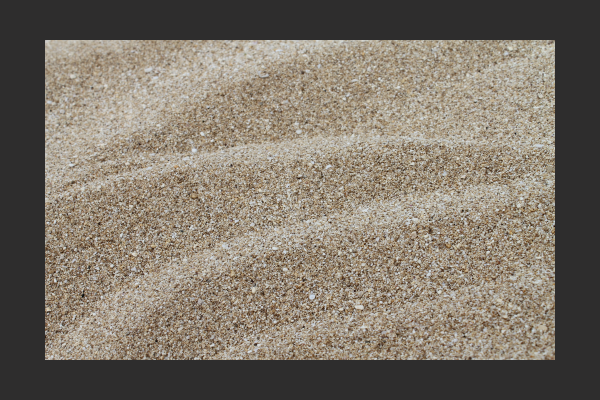
Next up on the list of grit to explore, we have the oh so simple… sand! Well, sand may seem like a simple grit solution with not much benefit, it has a good bit to offer your Vermicomposting system. Not only does. It serve as a good form of grit… it will also help to enhance your soil structure and ultimately help with aeration and drainage out in the garden. Along with these benefits, sand also offers the perfect habitat for beneficial microorganisms that aid in and make the composting process efficient. Sand can also play a small part in pH regulation and maintaining a balanced environment. You don’t need to use much sand during feeding since it can be quite an abrasive to your worms. sprinkle light layer over your kitchen scraps and you will be good to go. When using sand, you want to be sure that the sand is clean and not treated with chemicals for obvious reasons. Also, make sure you remove large or sharp particles because we wouldn’t want to harm your sweet little worms.
Vermicomposting is an art and is also very much personal preference in most aspects. Keep the basics in mind, and you should have a successful Vermicomposting journey.
Grit Type: Dolomite Lime
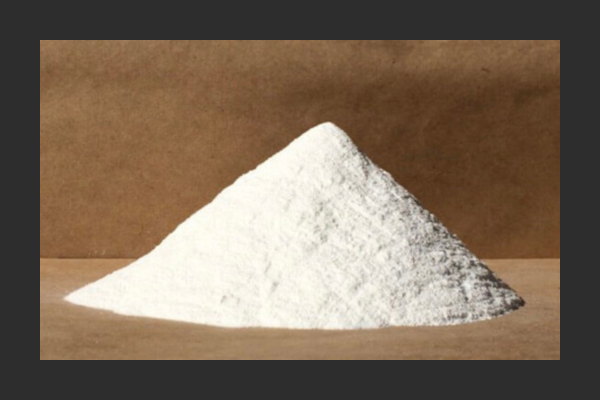
The last grit option we will cover in this blog is, lime!! If you decide to utilize this option, you’ll want to be sure to grab dolomite, lime, and not farmers lime; also known as, ag lime. Lime is a bit more beneficial in a Vermicomposting set up. Lime can help regulate the pH in your worm bin. Worms will be most comfortable in a pH environment raging from 6.5–7.5. Dolomite lime will also add calcium and magnesium, essential minerals that will help keep your worms healthy. It will also enhance the nutrient content of your Vermicast, a.k.a. worm poop. In addition to that, it will help shield odors from emitting from your bins. This really shouldn’t be an issue, as covering your kitchen scraps properly with bedding will likely keep odors at bay. When using dolomite lime, you will want to use it sparingly. Want to 2 tablespoons per square foot will be enough. Using too much can cause an alkaline environment. This will eventually bring stress upon your clew.
I hope this blog was helpful. Made it easier for you to explore your options for grit. I am a huge fan of rotating these options in order to develop the most nutrient dense castings possible. A key to Verma composting is that diversity creates the most beautiful worm poop. If you have discover another option, please feel free to share it with the community down in the comments section.

